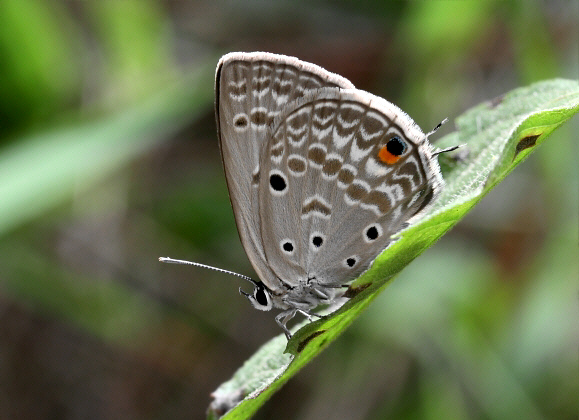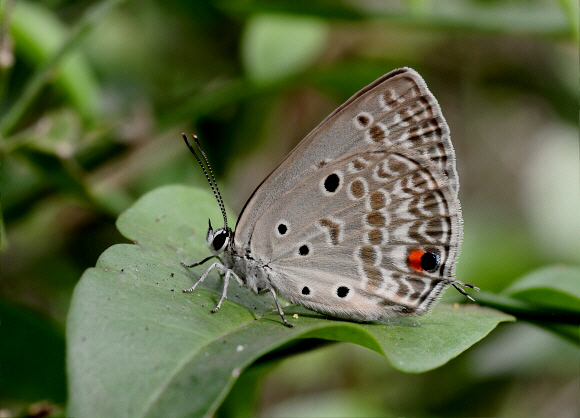
Introduction
There is a great deal of confusion about the taxonomy of Lepidochrysops and Orachrysops. These 2 genera together comprise of about 120-130 species, and are popularly known as Giant Cupids. Both genera are entirely Afrotropical in distribution. They are closely allied to Euchrysops which itself has representatives in Africa, the Oriental region and Australia.
Lepidochrysops are large butterflies by Lycaenid standards, with wingspans varying from 35-50mm. Their undersides are distinctively marked with well defined spots, a series of submarginal chevrons, and a red or orange crowned black cubital spot. The uppersides of males are blue or violet in most species including quassi. Females of most species are earthy brown, heavily marked with white or bluish-white. Both sexes are marked with a dark crescent or chevron at the end of the discal cell of the forewings, and a similar but smaller and paler mark on the hindwings. Several species such as quassi are tailed in both sexes, while others are tail-less.
The illustrated butterfly represents the typical morph of quassi. There is also another morph butha which has a white underside ground colour and is heavily marked with white on the upperside too. The butha morph is only found in the eastern part of the range, whereas the typical morph occurs across its entirety.
Lepidochrysops quassi is distributed from Cote d’Ivoire to Cameroon.
Habitats
This species is found in open woodlands, forest clearings and dense savannah habitats.
Lifecycle
The eggs are laid singly on unidentified Lamiaceae species. During the first 3 instars the larvae feed on the flowers, but in the 4th instar they become restless and eventually drop to the ground where they are grabbed by ants and taken into their nests. There the larvae become carnivorous, feeding on feed on the ant grubs and pupae, with their diet supplemented by aphid secretions which are regurgitated by the adult ants.
Adult behaviour
Both sexes nectar at Lamiaceae and other herbaceous flowering plants. They also imbibe aphid secretions from the surface of leaves in forest edge habitats.

